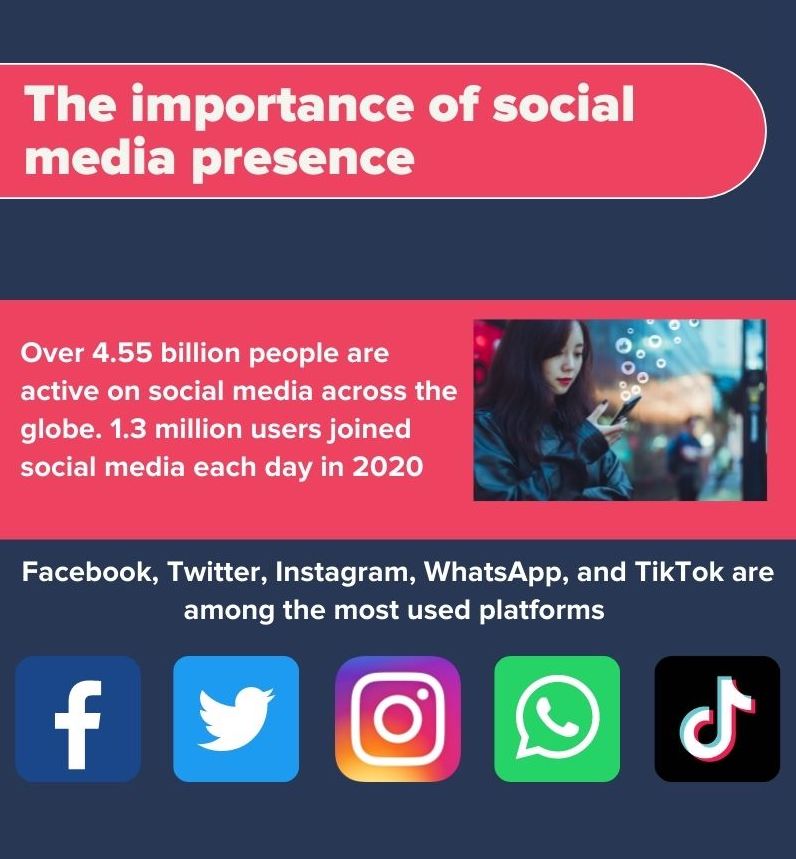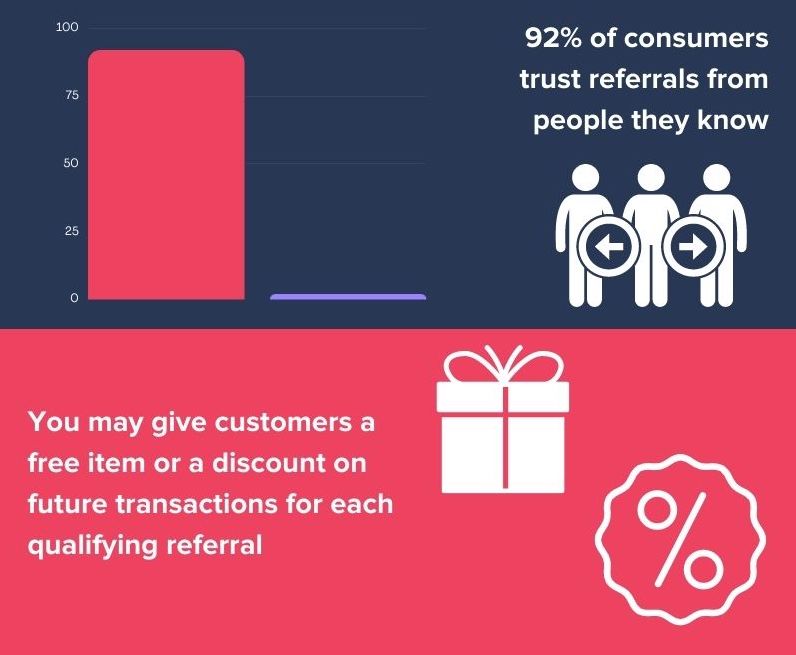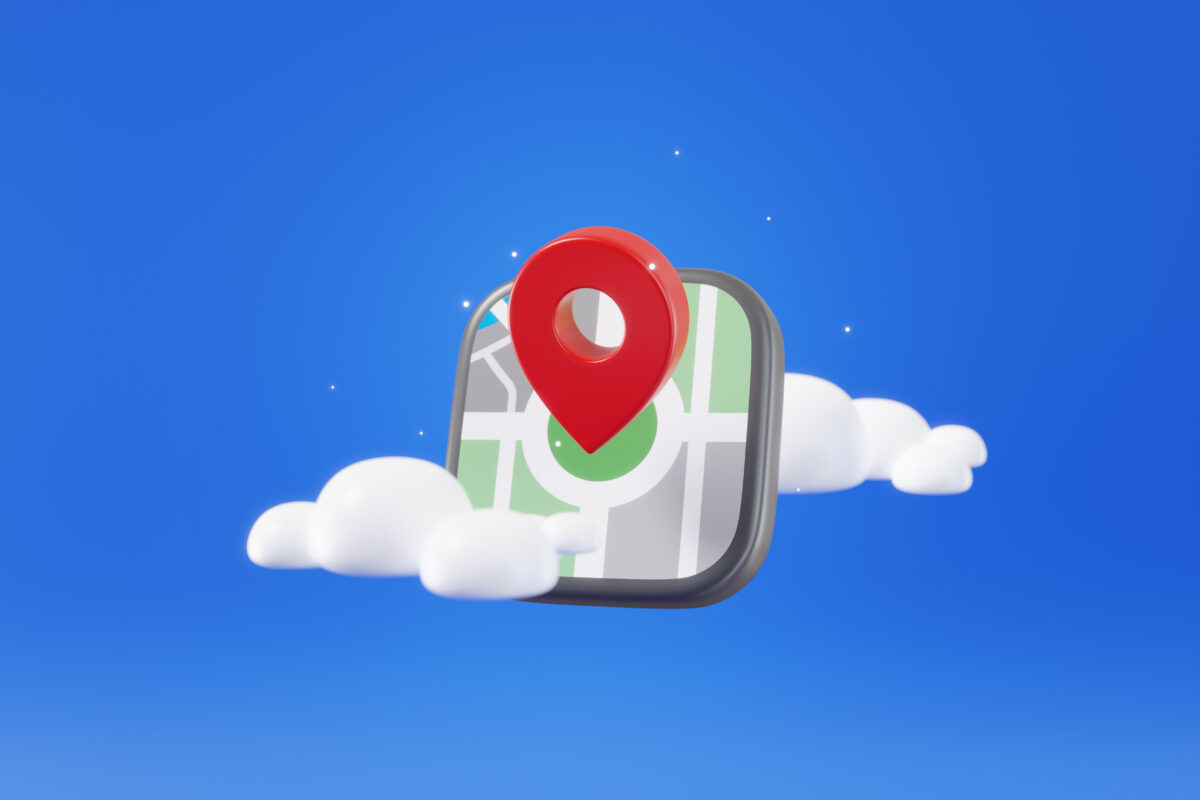
The Most Cost-Effective Marketing Strategies for Startups
1. Grow Your Online Presence on Social Media Platforms
Social media marketing is one of the most cost-effective digital marketing strategies for startups. Businesses can start growing their online presence with minimal or no spending.
According to statistics compiled by HubSpot, over 4.55 billion people are active on social media across the globe. 1.3 million users joined social media each day in 2020.
The size of the social media platforms allows you to reach almost anyone. As people tend to spend a lot of time on social media, it is often the most effective way to connect with your audience. You can also get started for free.
Set up social media profiles for your startup on the same platforms used by your target audience. Facebook, Twitter, Instagram, WhatsApp, and TikTok are among the most used platforms.

2. Lay the Foundation for Marketing with a Professional Website
A website is an important part of any marketing strategy. Your website is the foundation around which you build the rest of your marketing and advertising efforts. It provides a place to send people after discovering a business through other marketing channels.
Social media posts, emails, paid online ads, and print advertising should direct sales leads to a specific landing page for additional information. This requires a website.
The Internet provides a variety of options for setting up a website with limited funds. Anyone with a little bit of technical savvy can create an appealing website using a basic web builder such as WordPress. Web design agencies also often have affordable packages for building a professional site.

3. Use Email Marketing to Keep Your Audience Engaged
Email marketing is one of the original forms of digital marketing. It also remains one of the best low-cost marketing strategies. You can reach many people with a small budget.
Close to 4.3 billion people use email regularly, making the email market almost as big as the social media market. Startups use email marketing in a variety of ways, including brand awareness and lead acquisition. Email addresses are typically obtained through newsletter subscriptions or lead magnets.
Lead magnets involve offering subscribers something of value in exchange for their email addresses. For example, you may give away access to a helpful eBook, video, or webinar. You can continue to follow up with leads using additional emails, which can be automated to simplify your marketing efforts.

4. Produce Original Content to Establish Trust
Content marketing is one of the oldest methods for building relationships and trust with consumers. After the rise of the printing press, companies started producing pamphlets to provide consumers with helpful information. Modern marketing strategies still use the same formula, but the content is often published online.
Online content marketing includes blog posts, social media posts, and other content distributed through online channels. The content creates greater trust with your audience by addressing a specific concern or question.
For example, your audience may want to learn more about how your product works. You can produce informative content outlining how to get more value out of your products. This may include tutorials, guides, or FAQs.
Producing content also helps grow brand awareness and remain competitive. Over 90% of businesses use content marketing as part of their overall marketing strategies.
You increase your online presence by gaining traffic on your website and followers on your social media channels. Increasing your presence helps you capture more visitors when people search for relevant keywords instead of letting potential leads go to your competition.

5. Distribute Flyers or Brochures in Your Local Area
Along with online marketing, most businesses continue to use traditional offline marketing tactics to reach new customers and connect with existing ones. Among traditional marketing methods, flyer and brochure distribution stands out as one of the most effective marketing strategies for startups with limited budgets.
As mentioned, providing consumers with beneficial content builds trust. Your flyers or brochures should provide relevant information. The content should help your audience better understand your products or the benefits of choosing your startup.
View our post on unbeatable offline marketing strategies to discover additional ways to reach customers offline.

6. Create Business Cards for Your Startup
Business cards are another example of print advertising that remains effective in an increasingly digital world. A business card helps increase brand recognition.
Each time someone sees your business card in their wallet, they recall the name of your startup and what you offer. This recognition helps keep potential leads engaged instead of letting them slip away.
A business card also provides an opportunity to leave a lasting impression and create a stronger brand identity. You can use unique features to help your card stand out. A custom shape, unique material, and original design can make your card more memorable.
For example, a plastic or metal card will likely create a stronger impression compared to cards printed on standard paper stock. Some business cards also provide useful functions, such as business cards that incorporate a ruler, bookmark, or multi-tool.

7. Sponsor or Participate in Local Events
Startups often build their brand recognition through word-of-mouth advertising. Sponsoring or participating in local events allows you to spread the word about your brand and make a stronger connection with potential customers.
Many startups sponsor events at local college campuses. Students are typically eager to learn more about a new brand or product. Startups may also rent stalls at local events, such as festivals.
Participating in local events also gives you the opportunity to network. You may make connections that can further your business goals, such as discovering co-marketing opportunities with businesses that share the same values.

8. Create a Referral Program for Early Adopters
Let your first customers promote your startup. Referral programs are often used to boost the effectiveness of marketing strategies for startups. 92% of consumers trust referrals from people they know.
With a referral program, you offer existing customers some type of benefit for referring a new customer. You may give customers a free item or a discount on future transactions for each qualifying referral.
Depending on the industry, you may even consider setting up an affiliate program. An affiliate program is a type of referral program where affiliate marketers promote your products or services and receive a commission for each transaction.

9. Develop a Mobile App to Promote Your Startup
Mobile apps offer a cost-effective way to attract more interest in your startup. Paying for the development of a basic mobile app is relatively affordable compared to other marketing strategies for startups.
A mobile app is great for brand recognition, as it keeps your startup in the user’s memory. The app is visible on their phone or tablet. It may even enhance the features of your products or services. One of the most common examples is the use of customer service apps. The app simply connects customers with customer service solutions.

10. Set Goals and Track Your Marketing Strategies
Marketing strategies for startups may not offer overnight results. You need to continue tracking your progress to understand whether your efforts paid off.
Use Google Analytics to track your online efforts. To track offline marketing such as flyer distribution, consider using a platform such as Oppizi. Tracking your results allows you to tweak your strategies to continually increase the effectiveness of your marketing campaigns.

How to Develop Low-Cost Marketing Strategies That Work
Now that you have a variety of options for marketing your startup, you need to tweak the strategy to fit your specific needs. Here are five key components for successful marketing strategies for startups:
- Budget
- Goals
- Target audience
- Market research
- Marketing channels
Failing to develop a plan keeps you from determining the success of your marketing efforts. Decide what you want to get out of the marketing campaign.
1. Set SMART Goals for Your Marketing Strategy
Goals help shape your marketing strategy and budget. You also need goals to track progress. The SMART method is a common approach for goal setting. It requires each goal to meet the following criteria:
- Specific
- Measurable
- Achievable
- Relevant
- Time-bound
Setting clear, specific goals allows you to break the goal into smaller steps. It also includes measurable factors, such as reaching millions of potential leads or converting a specific percentage of website visitors.
Your goals should also be achievable and relevant to the overall mission of your startup. These details ensure that your marketing efforts are worthwhile. Finally, make sure that your goals are time-bound. Set a specific timeframe to keep your marketing efforts on track.
2. Set Your Initial Marketing Budget
Your budget is one of the most important decisions when developing successful marketing strategies for startups. Your maximum budget is likely based on your operational costs and potential revenue. However, you should also consider your goals when setting a budget.
For example, if your strategy involves creating a website, establishing an email campaign, and printing flyers, you need to analyze the costs of each step. Understanding the typical costs of each component of your strategy helps you set a realistic spending amount.
Keep in mind that you can alter your budget along the way. If your startup attracts attention faster than anticipated, you may need to boost your spending to capitalize on the increased awareness.

3. Define and Analyze Your Target Audience
Startups often focus on niche markets with a specific audience. Understanding your audience is crucial to getting more out of your marketing strategy. Knowing who you are creating marketing content for helps increase its effectiveness, resulting in a better return on investment.
Many businesses create buyer personas to keep their marketing message consistent. A buyer persona is a detailed description of your target customer. It includes their approximate age, location, interests, spending power, and challenges.

4. Research Demand and Competition
Always perform market research before launching a marketing campaign. Understanding your place in the market helps you develop realistic goals for your marketing efforts. You should know the size of the market and understand the current demand for the products or services that you promote. The market research also requires you to analyze the competition and their hold on the market.
If the pool of customers is too small and the competition is too great, you may struggle to make a mark with a small marketing budget. Market research allows you to determine whether you need to increase the scope of your marketing to reach a wider audience.
5. Choose the Right Marketing Channels
After considering the previous details, select the marketing channels that best fit your specific goals, budget, and target audience. Some of the most cost-effective marketing channels include:
- Social media
- Print flyers
Email marketing offers a great ROI and helps convert more leads. An email marketing campaign allows you to continue interacting with potential leads to gradually build trust and engagement.
Social media marketing involves using the most popular social platforms to connect with your target audience. You reach people on the platforms that they use every day, which creates a greater sense of familiarity.
Print flyers and other forms of print advertising are affordable and effective for startups that want to gain more attention quickly. Fewer companies are using direct mail, which allows you to capture more leads.

Last Thoughts on Developing Marketing Strategies for Startups
Developing a marketing strategy that fits your budget requires planning. You need to think about your goals, target audience, competition, and budget. Startups should also consider using a combination of online and offline marketing tactics.
Websites, social media, and email allow you to provide helpful information to potential customers. However, offline marketing, such as flyer distribution, helps you generate more leads.
No matter the marketing strategies that you decide on, continue to monitor your progress. Track your print advertising campaigns using Oppizi and analytics software to analyze online metrics, such as web traffic and conversion rates.




